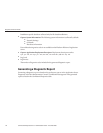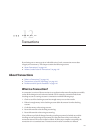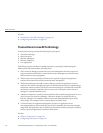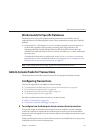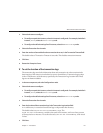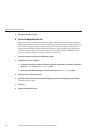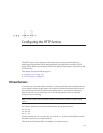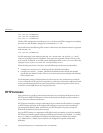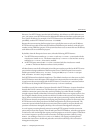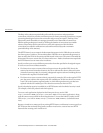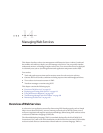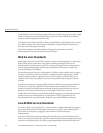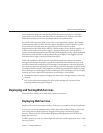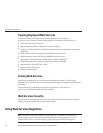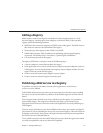
http://www.aaa.com:8080/web1
http://www.bbb.com:8080/web2
http://www.ccc.com:8080/web3
The rst URL is mapped to virtual host www.aaa.com, the second URL is mapped to virtual host
www.bbb.com, and the third is mapped to virtual host www.ccc.com.
On the other hand, the following URL results in a 404 return code, because web3 isn’t registered
with www.bbb.com:
http://www.bbb.com:8080/web3
For this mapping to work, make sure that www.aaa.com, www.bbb.com, and www.ccc.com all
resolve to your physical server’s IP address. They need to be registered with the DNS server for
your network. In addition, on a UNIX system, add these domains to your /etc/hosts le (if the
setting for hosts in your /etc/nsswitch.conf le includes files).
When the Enterprise Server is started, it starts the following virtual servers automatically:
■
A virtual server named server , which hosts all user-dened web modules
■
A virtual server named __asadmin, which hosts all administration-related web modules
(specically, the Admin Console). This server is restricted; you cannot deploy web modules
to this virtual server.
For development, testing, and deployment of web services in a non-production environment,
server is often the only virtual server required. In a production environment, additional virtual
servers provide hosting facilities for users and customers so that each appears to have its own
web server, even though there is only one physical server.
HTTP Listeners
Each virtual server provides connections between the server and clients through one or more
HTTP listeners. Each HTTP listener is a listen socket that has an IP address, a port number, a
server name, and a default virtual server.
HTTP listeners must have a unique combination of port number and IP address. For example,
an HTTP listener can listen on all congured IP addresses on a given port for a machine by
specifying the IP address 0.0.0.0. Alternatively, the HTTP listener can specify a unique IP
address for each listener, but use the same port.
Since an HTTP listener is a combination of IP address and port number, you can have multiple
HTTP listeners with the same IP address and dierent port numbers (for example, 1.1.1.1:8081
and 1.1.1.1:8082), or with dierent IP addresses and the same port number (for example,
1.1.1.1:8081 and 1.2.3.4:8081, if your machine was congured to respond to both these
addresses).
HTTP Listeners
SunGlassFishEnterpriseServer2.1AdministrationGuide • December2008150



